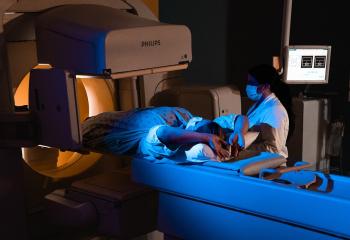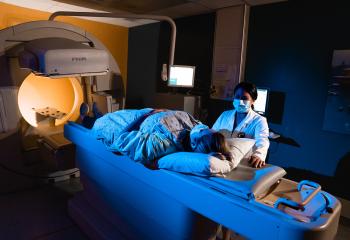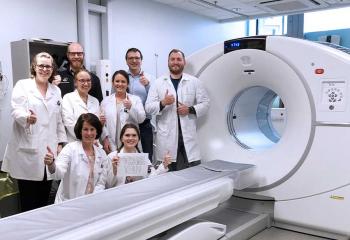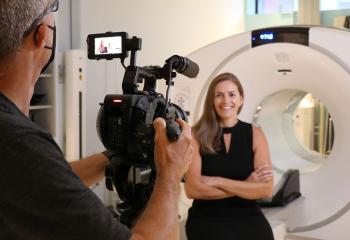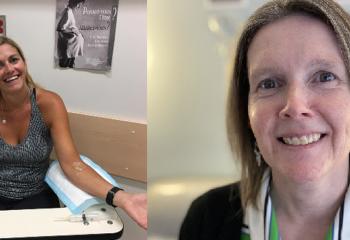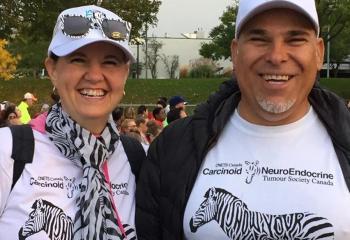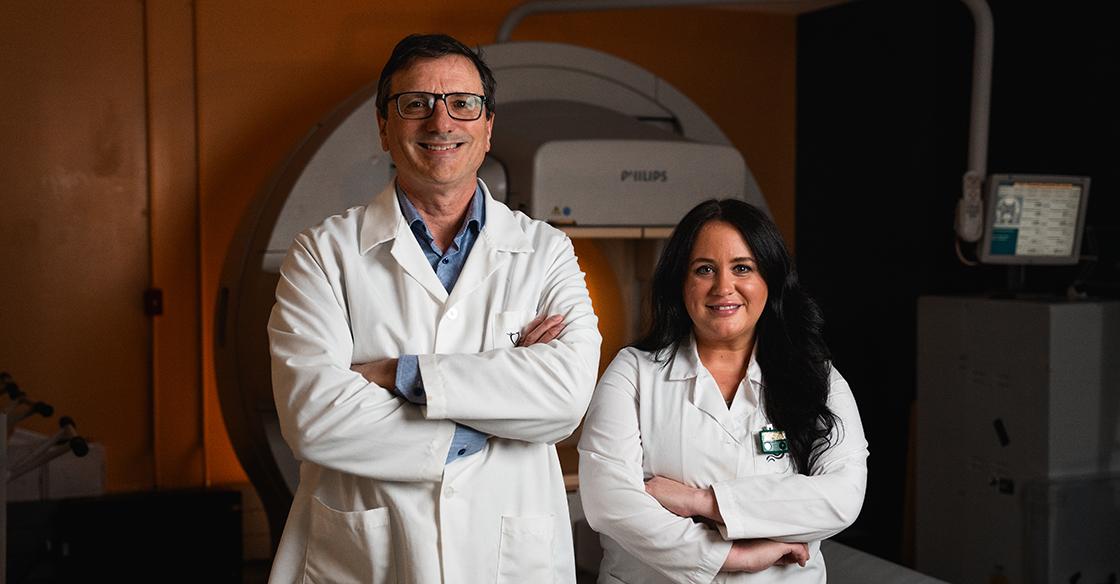
Dr. Steven Burrell, QEII’s head of Nuclear Medicine, and Natasha Warwick, chief nuclear medicine technologist, QEII (Uncharted Media Inc.)
Nuclear medicine is a unique, specialized field within diagnostic imaging, transforming how diseases are diagnosed, treated and managed across many areas of medicine.
Each year, the current nuclear medicine technology at the QEII performs more than 4,000 patient scans – critical for patients facing life-altering diseases like cancer and heart disease.
Dr. Steven Burrell, QEII’s head of Nuclear Medicine, and Natasha Warwick, chief nuclear medicine technologist at the QEII, share how with donor support bringing two new state-of-the-art nuclear medicine scanners to the QEII will transform care.
Dr. Burrell is one of 40 QEII radiology and nuclear medicine physicians supporting this project. This group of physicians know the impact firsthand, which is why they’re matching all donations to the QEII Foundation in support of these scanners up to $100,000 until December 31.
Q: Why does the QEII need new nuclear medicine technology?
Dr. Burrell: Right now, the nuclear medicine scanners at the QEII are outdated and operating at full capacity, working hard to scan thousands of patients each year. They are reaching the end of their life cycle. At the same time, new advancements in nuclear medicine are unlike any in my 20-year career. It’s a quantum leap forward.
The new scanners provide higher quality images, which means greater accuracy, allowing for better diagnosis, better monitoring of diseases and our ability to do that with greater confidence. Things that our current technology can’t do.
Q: What makes nuclear medicine unique?
Dr. Burrell: In nuclear medicine, we use tracers to seek out and image disease. The tracers can be inhaled, injected or swallowed by the patient depending on the type of testing they need. The scanners – similar to an MRI or CT scanner – detect the energy given off by those tracers and create an image showing the distribution of disease within the body. Image quality is critical in nuclear medicine; the more precise the image, the better we can assess and diagnose certain diseases.
Q: How will this new technology benefit patients during the scan?
Natasha Warwick: Reduced scan times will be the most significant patient impact. Right now, some patients undergo 45-minute scans. The new technology will cut scan times in half. For patients who are incredibly ill, frail, elderly or living with dementia, the scans can be a hardship. Reduced scan times will be more comfortable for them.
Better image quality and resolution will allow us to capture everything we need in one scan. Some patients have to return to the hospital multiple times over days or weeks for more scans or tests. When we get these new scanners, one scan is all they will need, meaning they can spend less time in the hospital.
Q: How can the community get involved?
Dr. Burrell: It’s likely someone you know or love will benefit from this new nuclear technology at the QEII. You can help them get the most targeted and effective treatments available by considering making a gift this season.
Donors have already changed the lives of thousands of patients by investing in diagnostic imaging technology like PET-CT and Gallium-68 at the QEII in the past. Patients benefit every day from that technology. We wouldn’t be where we are without your generosity. I hope you will consider joining this new era in nuclear medicine.
With a gift today, your support will be doubled and will help patients access the most advanced nuclear medicine technology in the world at the QEII. All gifts up to $100,000 will be doubled until December 31. Learn more or donate today.
